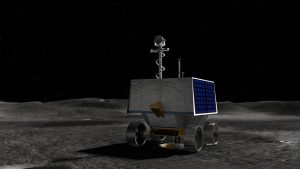
The site, to be explored in 2023, is the western edge of the Nobile Crater near the Moon’s South Pole.
The region features areas permanently covered in shadow as well as areas that are bathed in sunlight most of the time. NASA has decided the terrain in the area is the most suitable for the rover to navigate, communicate, and characterise potential water and other resources.
“Once on the lunar surface, VIPER will provide ground truth measurements for the presence of water and other resources at the Moon’s South Pole, and the areas surrounding Nobile Crater showed the most promise in this scientific pursuit” said Thomas Zurbuchen, associate administrator for science at NASA Headquarters.
“The data VIPER returns will provide lunar scientists around the world with further insight into our Moon’s cosmic origin, evolution, and history, and it will also help inform future Artemis missions to the Moon and beyond by enabling us to better understand the lunar environment in these previously unexplored areas hundreds of thousands of miles away.”
Viper
Viper is NASA’s first mobile robotic mission on the Moon, and represents the first-ever resource mapping mission on the surface of another celestial body.
Looking for evidence of water by analysing lunar soil, it will be equipped with three science instruments and a drill. It’s mission will last 100 days and cover up to 15 miles in distance. During this time, it will visit at least six locations, says the agency, where data suggests ice could be found.
For example, the rover’s itinerary will include permanently shadowed craters, which are some of the coldest spots in our solar system. It’s believed that ice reserves may have been preserved for billions of years.
The rover’s findings will also help decide future landing sites under NASA’s Artemis programme.
“Our evaluation of the landing site was driven by science priorities,” said Anthony Colaprete, VIPER lead project scientist at NASA’s Ames Research Center in Silicon Valley, California. “We seek answers to some pretty complex questions and studying these resources on the Moon that have stood the test of time will help us answer them.”
Viper will launch on a SpaceX Falcon-Heavy rocket for delivery to the Moon by Astrobotic’s Griffin lander under NASA’s Commercial Lunar Payload Services initiative.
You can read more about the VIPER mission on the NASA website.
Image: NASA and Daniel Rutter – Illustration of NASA’s Volatiles Investigating Polar Exploration Rover (VIPER) on the surface of the Moon